Introduction
The N8 is the first hybrid that 64 Audio offers exclusively in custom form and retails for $1,700. It sports 8 balanced armature drivers (one of which is their direct-radiating “tia” BA driver) and a single dynamic driver acting as a woofer. 64 Audio has previously dabbled with hybrid technology with their $3,600 Tia Fourte quad-driver model, which has been updated to the cheaper $2,300 Tia Trio triple-driver model.
Brief Subjective Impressions
I’ll be publishing a full subjective review on the website.
In short, the N8 is what I hear to be a bassy, almost dark response response, the bass frequencies almost overwhelming the rest of the range. The N8 has decent detail pickup and overall resolution, quite obviously hindered by the skewed tonality.
The N8’s main strengths are in its bass response and timbre. The N8 can articulate sub-40 Hz frequencies much better than any IEM I know and its decay pattern is spot on. The precise decay and reverb effect also extends to the rest of the frequency range; the tonal balance of the N8 can be a little heavy and dark for those used to sharp, quick notes and/or a higher-frequency-leaning tonality, edging too close to muddy territory for my ears.
Tonally, it excels at male vocals as well as baritone/alto bowed stringed and wind instruments. Also matches up with its marketing for being absolutely sublime with any style of bass guitar.
Measurements
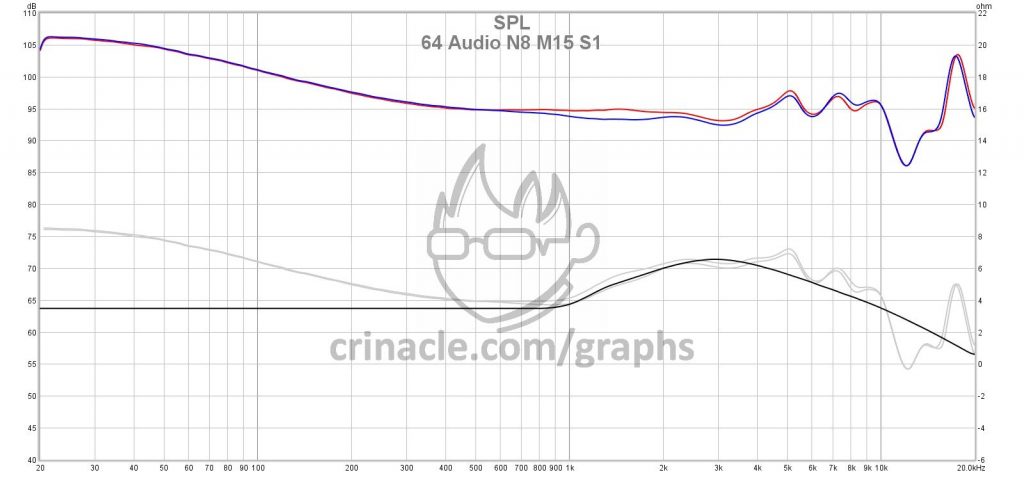
- 10 dBs of bass emphasis is a lot, especially for a hybrid. It seems to be a well-documented phenomenon that balanced armature woofers portray subjectively less bass response than what is measured, at least relative to dynamic drivers.
- Bass emphasis is rather “dirty” on my custom unit, the rise already beginning at 900Hz. Interestingly, the demo unit only rises below 400Hz which sounds much cleaner.
- The 2-5k emphasis, while not to the extent of diffuse-field or Harman targets, is to my perception of “neutral”. It can also be expected that such a response would measure flat on a coupler with no inner-ear simulation.
- Treble is very well extended. Whether or not due to its tia driver remains to be discovered. Most IEMs tend to roll off hard after 10kHz.
Internal look
Dynamic driver woofer
One of the most interesting things about the N8 is the way they’ve implemented their dynamic driver woofer. Typically, the driver (any kind) would be connected to the nozzle in order to direct the sound waves into the ear canal.
Before I go any further, some context:
The traditional ways
Apart from electrical low-pass filters, one can also apply a handful of physical methods as well to further restrict the output of the target woofer.
Per Sonion’s design guide, there are various methods of physically inducing a low-pass filter:
- Acoustic dampers (of varying impedances)
- Position of damper (further from driver = more efficient)
- Tubing length (longer = more lowpass)
- Tubing diameter (smaller = more lowpass)
All these are the very basics of IEM design, but some have taken these concepts a step further. The most famous of which comes from Shure and their SE846, utilising an array of machined metal plates to create a long maze of “tubing” in which its woofer would fire into.
Source: US Patent 20130315431
You can see that it works; the higher frequencies are attenuated so much to the point where only the sub-bass regions are audible. At this point it is essentially a subwoofer and so a proper low-frequency rise is achieved, the SE846 beginning its bass emphasis only at frequencies below 300Hz.
On the custom IEM side of things (specifically in the hybrid context), elongated tubing isn’t particularly common and most seem to be content with the tried-and-true combo of restricted tubing diameter and high-value acoustic dampers. On the other hand, there are companies getting creative with liberal amounts of tubing, like Lear and their BD-4.2 hybrid:
So in terms of the physical side of IEM woofer design, there doesn’t seem to be too much free-play beyond the dimensions of the tubing. But what if there was no tubing?
A Curious Design
With the N8, there is no tubing that connects the dynamic driver woofer to the canal bore. It just sits there, firing straight into the shell cavity itself.
Its driver configuration is broken down into the following:
- An array of 6 BAs (3 TWFK-esque drivers) designated for mid frequencies
- A single BA designated for the higher mid frequencies
- A direct-radiating “tia” driver placed at the nozzle, most likely high-passed for treble
- A single dynamic driver acting as a (sub)woofer
Here’s my illustration of the positioning of bores at the tip (not to scale):
There is a bore that connects the main bore to the shell’s inner cavity, allowing for the sound generated by the dynamic woofer to enter the canal. It’s an interesting design choice that I have never seen before in a custom, but am still more than familiar with based on 64 Audio’s current flagship: the tia Fourte.
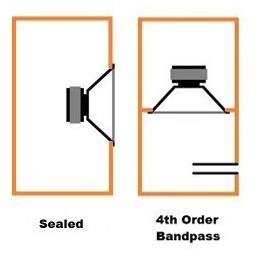
While the N8 is not completely tubeless like the Fourte, it is clear that it borrows a lot of trickle-down technology from its more expensive brother. The other interesting thing is that such a technique also results in a much more potent low-pass effect, similar (but not equivalent) to that of a bandpass box enclosure of actual subwoofers. The output of the DD is limited to a single “port” that leads to the main bore and (theoretically) creates an extremely steep roll-off of higher frequencies as well as increasing the efficiency of the woofer over a smaller range, arguably more than any traditional tubing system. The effects are even quantifiable of course; the N8 has one of the best measuring low-frequency rises that I have ever tested (the universal at least), second only to the AKG N5005.
On top of that, the N8’s dynamic driver has been further restricted with what seems to be a plate attached to the diaphragm side of the driver, with a pinhole punched through:
Admittedly, that pinhole would be have the greatest low-pass effect compared to the pseudo 4th-order bandpass. Though it wouldn’t hurt to have a little extra high frequency cutoff, especially when you’re tuning more than 10dBs of bass emphasis.
On that note: some inconsistencies
The other interesting thing is that during my investigative research, it seems like 64 Audio has made some stealth revisions to their design even after release. Headfonia received one of the first production N8s and it looks like that doesn’t have this plating in place, instead following the “exposed-and-visible diaphragm” approach just that the Fourte has.

And in the batches before the current revision, there seems to a switch to a metallic foil-based covering over the driver’s output with the pinhole restriction:
Pictures taken from various Chinese forums
Whether or not that affects the sound of different production batches remains to be seen.
Tia Driver
The “tia” driver is other one of 64 Audio’s unique technologies, not commonly seen in the IEM industry due to what I suspect to be the difficulty of installation. It sits within the nozzle and is most likely configured as a high-passed tweeter for treble. There seems to be a very quantifiable increase in treble extension as compared to their older products, though models with the tia driver tend to spike at around 17kHz.
Removing all the marketingspeak, the tia driver is a direct-radiating balanced armature driver. Typical BA drivers are designed in a way that fires out through a spout, which is kind of a low-pass filter in itself. This is done so in order to keep the design compact and linear.
Direct-radiation BA drivers simply have their the spout and “roof” removed, leaving the output of the diaphragm unimpeded by any structures or enclosures outside the one that it is built in.
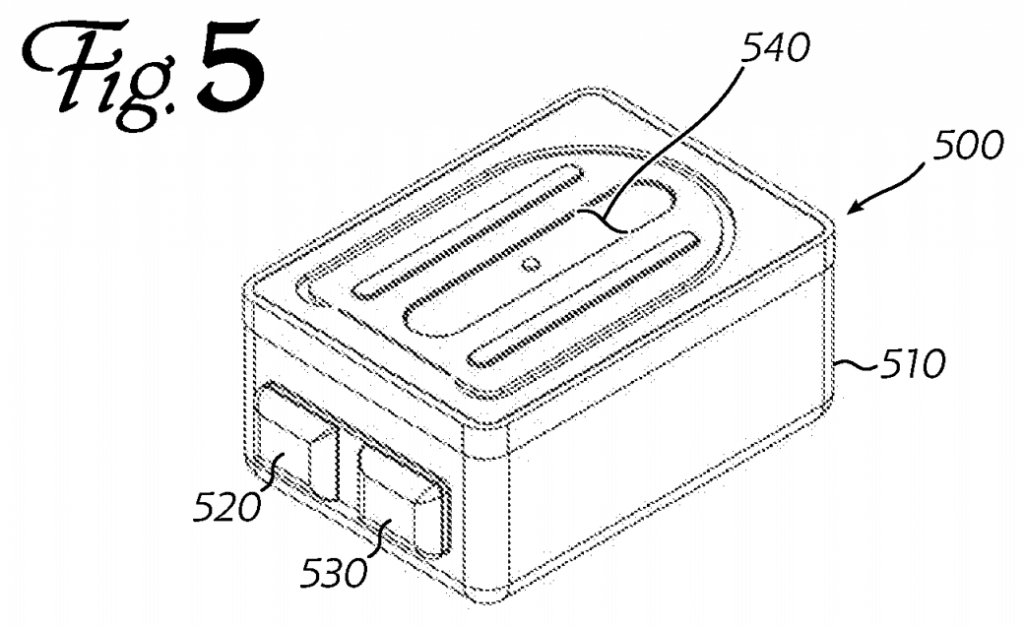
The above shows an example of a “tia” driver, where #540 depicts the “exposed” diaphragm of the balanced armature driver. Referring back to my bore illustration, the tia driver fires perpendicularly into the main bore, mixing with the rest of the frequencies from the other drivers as it does.
64 Audio, however, wasn’t really the first to implement this concept. Ultimate Ears used what they called a “True Tone” balanced armature tweeter with their update of their Reference Monitor model, the Ultimate Ears Reference Remastered (UERR) all the way back in late 2015.
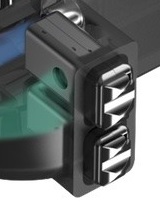
Removing again the marketingspeak, the “True Tone” driver isn’t quite a true “direct-radiating” but rather classified as a “top port” balanced armature by Knowles. The implementation is also different; while 64 Audio opts to have the direct-radiating tweeter firing as close to the eardrum as possible, UE designed a 3D-printed structure (US patent #9191758) specifically to house their top-ported drivers in the proper orientation (as well as to maintain consistency in manufacturing, but that’s another topic for another time). The difference between tia and True Tone is still significant of course, but at the end of the day 64’s tia technology is less unique than what they’d like you to believe.
APEX
64 Audio’s APEX technology is a complex (and surprisingly political) topic behind a rather simple concept: canal pressure relief.
Ignoring all the studies, health benefit claims and the back and forth between Asius and 64 Audio (that I’ll get to another time, all that honestly has no relevance in this breakdown), what APEX does is to essentially provide an outlet for air pass through like an ambient filter. But it’s also not quite an ambient filter, especially for the M20 modules that don’t really affect isolation significantly. It’s really more for the purpose of equalising canal pressure than decreasing isolation.

Each APEX module is filled with an open celled viscoelastic foam (shown in the diagram on the left as #226), which acts as a medium to regulate the air flow between the IEM and the vent located near the top of the module itself. This results in less low-frequency leakage, retaining bass performance whilst achieving the goal of pneumatic pressure relief. The M20 module only has one vent while the M15 module has two (shown as either #229 or #230 depending), which explains why the M20 (named after how it attenuates 20dBs of ambient noise) should isolate more than the M15 (attenuating 15dBs of noise).
The N8’s APEX system actually differs slightly from the rest of the custom models. For the others from the A2e all the way up to the A18t, the APEX module is connected directly to the canal via tubing, as shown below:

The tubing as shown in the diagram as #454 creates a connection between the canal and the outside environment, with the APEX module regulating airflow ideally to the lowest possible amount without compromising bass performance or pressure relief.
Now considering that the N8 already has a bore that connects the canal to the inner cavity for the dynamic driver’s output, there is no longer a need to have a direct connection between the canal to the outside environment via tubing.. All the APEX module of the N8 has to connect to is the inner cavity.
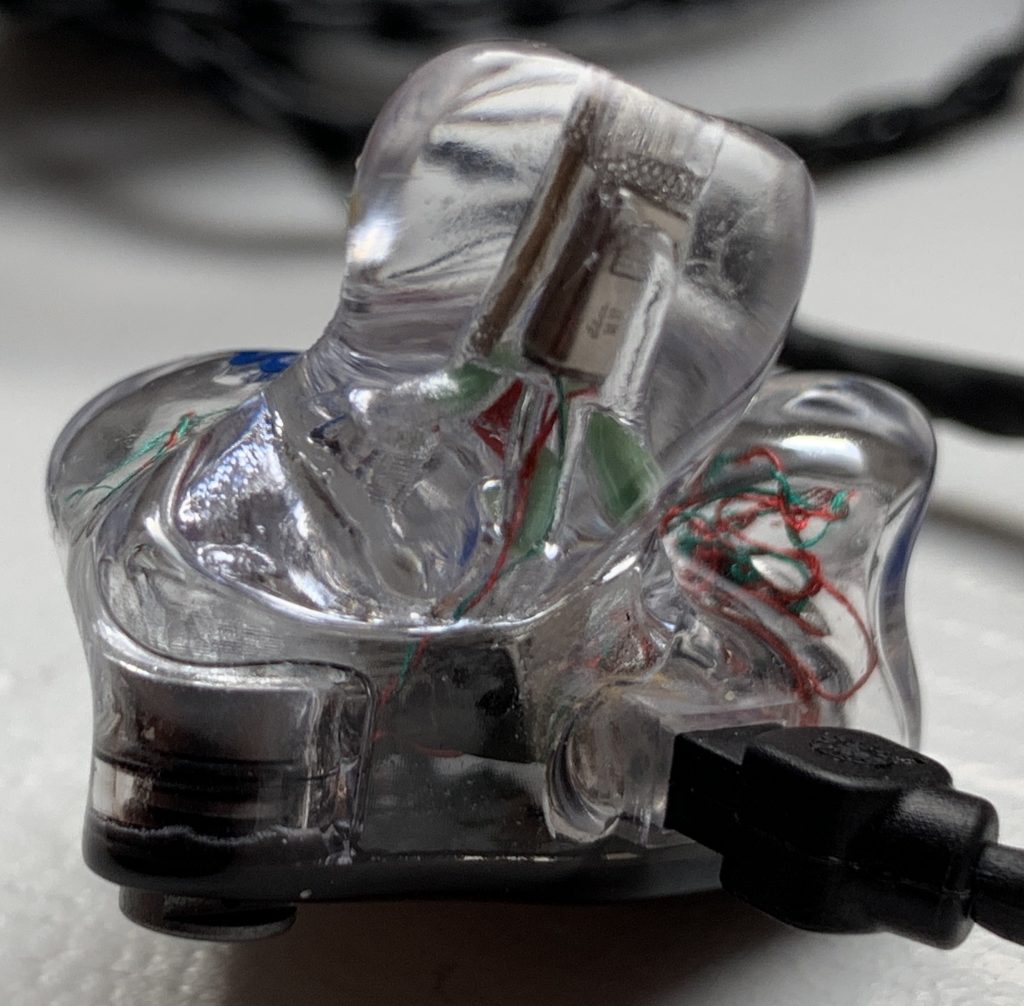
The implications of this is that now the N8’s APEX module acts as a front volume vent for the dynamic driver (well technically it has always been a front volume vent, but now it’s a little more specific) and thus should be extremely sensitive to any changes in the “filter” used. Which is in a way both good and bad; on one hand if you ever want the absolute maximum bass response out of your N8, you’re probably not going to get it out of an APEX module. On the other hand, there are added possibilities for different sounds and signatures due to the higher reactivity to filter changes, especially with (hint hint) third party modules.
The solid core nickel module is a module I purchased from Music Sanctuary and is custom ordered for their own projects. With the N8, it is very clear that it is a system that basically necessitates the need for APEX (or similar pressure relief mechanisms). Inserting the N8 with a solid core module creates a lot of in-canal pressure, especially with a custom fit where one usually gets a vacuum seal. This actually locks the dynamic driver’s diaphragm (which is also referred to “driver flex”, though there is no audible crinkling effect in this case) and bass response is severely affected, at least until I break the seal to equalise the internal pressures or remove and re-insert the solid core module while I’m wearing my customs. The trouble of going through all that just for a little extra isolation or bass isn’t worth it for me.
The other interesting thing is that the APEX connection port of the N8 isn’t fully open, but rather still has an additional resistive filter film/damper attached to it, unlike the universal demo units that I tried prior to my purchase. With the universal demos the APEX connector is fully open, so “going commando” results in complete bass roll-off due to the leakage. On the customs however, using the N8 without any APEX modules is actually a rather viable option, so viable in fact that I actually prefer not using any modules when I’m in a silent environment.
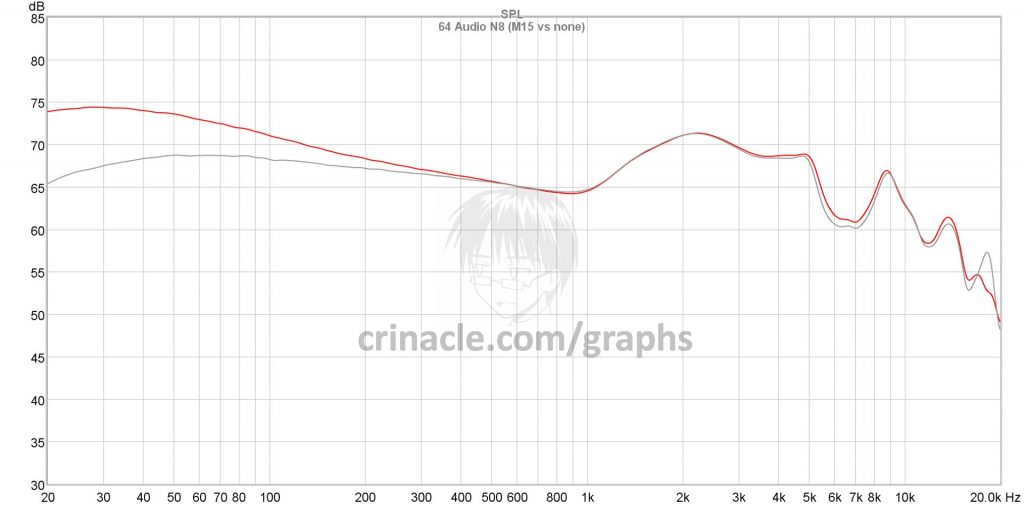
Driver breakdown measurements
In order to isolate the output of the dynamic driver, I will measure the N8 with it disabled and have it compared against the regular measurement. Due to the nature of dynamic drivers, its diaphragm can be effectively “locked” when there is no pressure equalisation in either the front or back volume. As the IEC60318-4 microphone already has a pneumatic pressure relief mechanism within the coupler, blocking the back volume vent located at the top of the shell is an adequate measure.
In grey, the standard “stock” measurements are outlined. In red and blue are what is effectively the standalone output of the BAs in the N8
Bass is knocked down by about 5 decibels so for anyone who thinks that the N8’s bass is a tad too overpowering, the choice is at least open for you. Subjectively, the soundstage improves by a rather significant margin and clarity also increases, possibly due to the reduced contrast between the lower and higher frequencies.
The journey to perfection: Modifying the N8
In my attempt to dissect the BA and DD output of the N8 I’ve come to a rather interesting conclusion: it can be “fixed”. The stock N8 has its fair share of issues, namely its overpowering and bloated bass response that wasn’t there in the universal demo unit. What I’ve concluded was that 64 Audio has unintentionally (or perhaps intentionally, and the demo unit being its own fluke) overpowered the DD in the N8. So in order to bring back control to the N8’s signature, I experimented around.
At first, I thought the solution laid in the APEX module. If I could adjust the leakage of the module itself, perhaps I could do it in a way that controlled the bass boost. It did, but unfortunately due to the APEX module acting as a front vent, the bass starts rolling off sub-bass first and midbass second. The signature of the N8 without modules was also rather pleasant but also lost the essence of what made it a “N8” in the first place. A band-aid solution for sure but nothing I can call absolute.
Blocking the back vent was the next solution that came to mind. It was a semi-permanent solution but I didn’t like the stock N8’s signature anways, so I didn’t mind experimenting around. I don’t have a lot of pictures of this process since it was mostly on-the-fly, but what I did was basically cutting up a foam tip (one of those super porous kinds) and shoving an extremely tiny square into the back vent. I then messed around with its placement with a needle, constantly checking the output with my microphone until I got what I wanted. After literally hours of tinkering, I finally got something I was satisfied with.
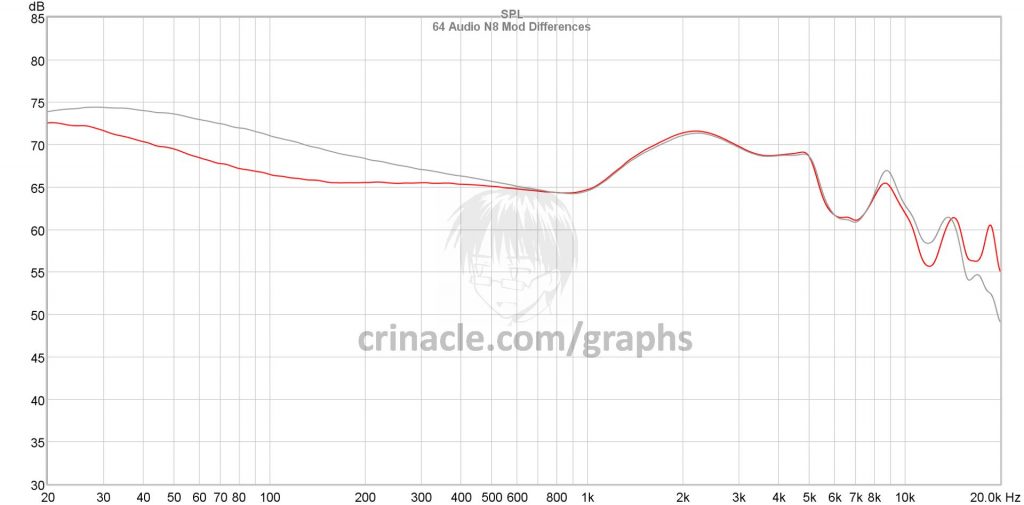
What I got was almost a complete elimination of the N8’s original midbass bloat, focusing its emphasis almost entirely in the lowest sub-bass regions. I’ve measured many IEMs in my time, and not a single one has come close to what this modified N8 has achieved. A bass rise under 150Hz creates a presence that is almost subtle but absolutely crucial for the proper timbre and reproduction of bass in IEMs, whilst keeping the transients clean and free from smearing.
More in my subjective review, to be linked here in time.
Conclusion
Despite the N8 suffering from a serious case of “middle child syndrome”, it’s actually one of the most unique, interesting and best performing models in their lineup. So many good implementations of trickle-down technology and novel ideas, all glossed over by the fact that it’s endorsed by Nathan East.
I definitely have newfound respect for 64 Audio for not limiting their goodies to their top-dog, ridiculously expensive models. Shame that they came so close to my ideals yet stumbled at the finish line, though nothing a little tinkering can’t fix. I’m looking forward to what they have up their sleeve next.

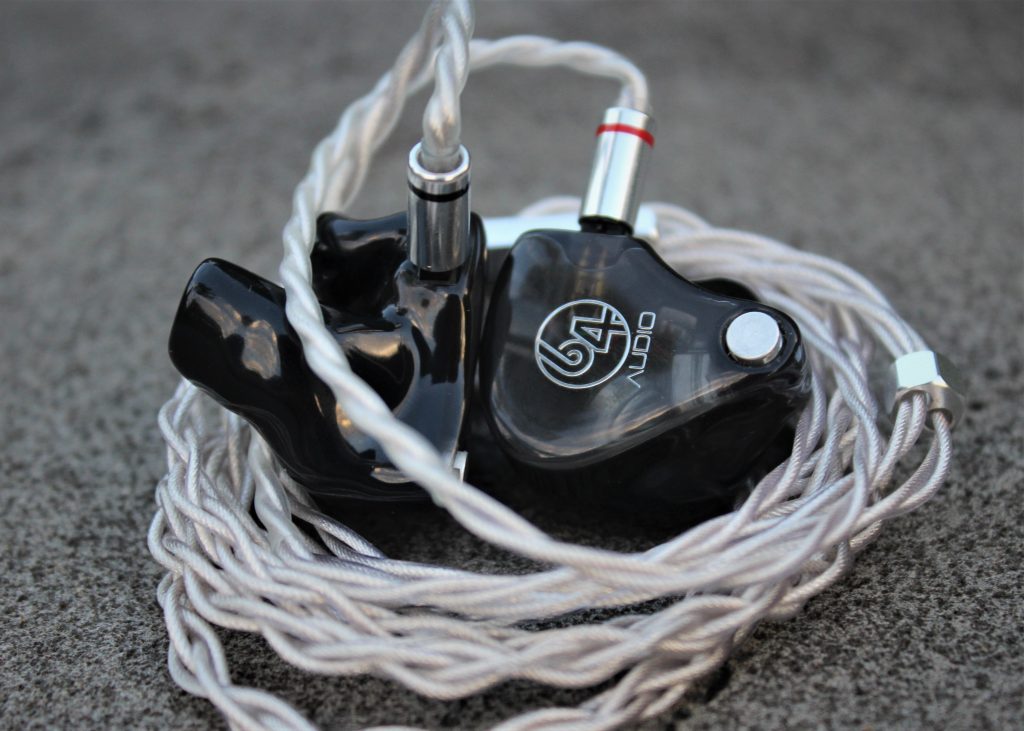
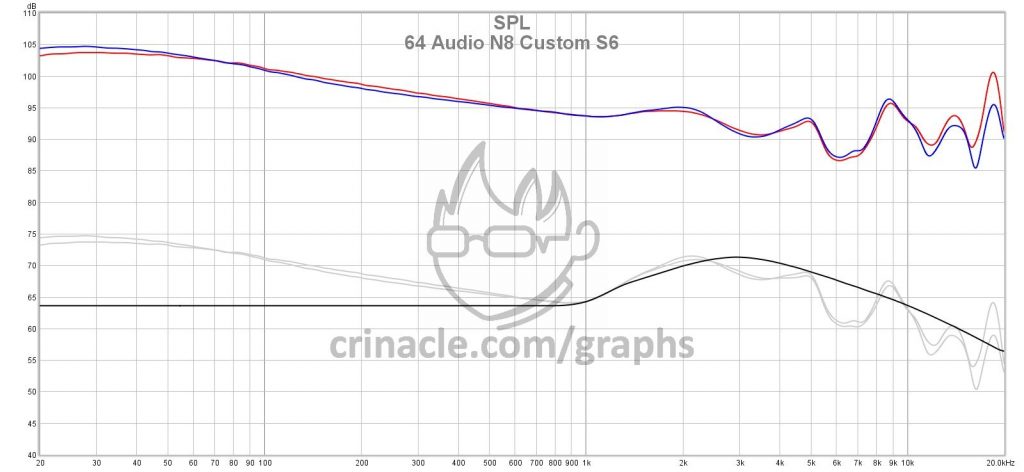
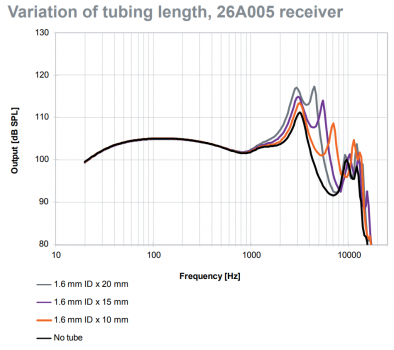
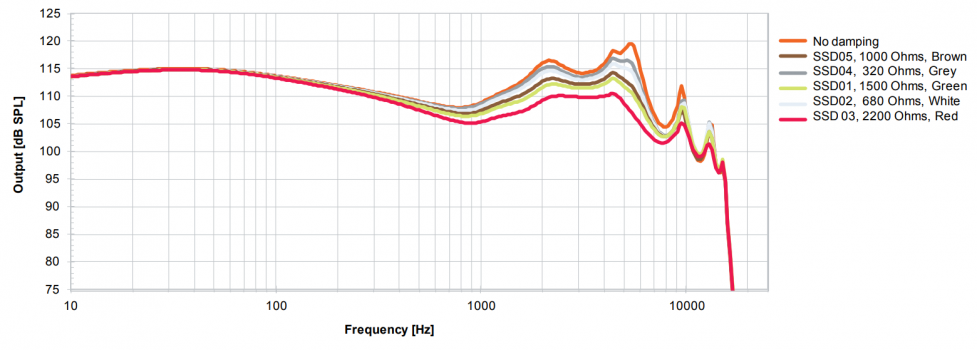
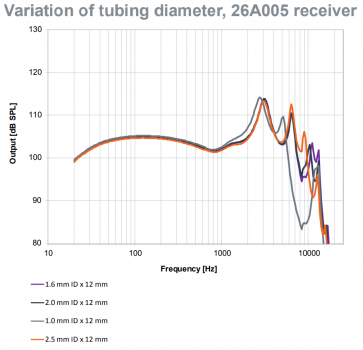
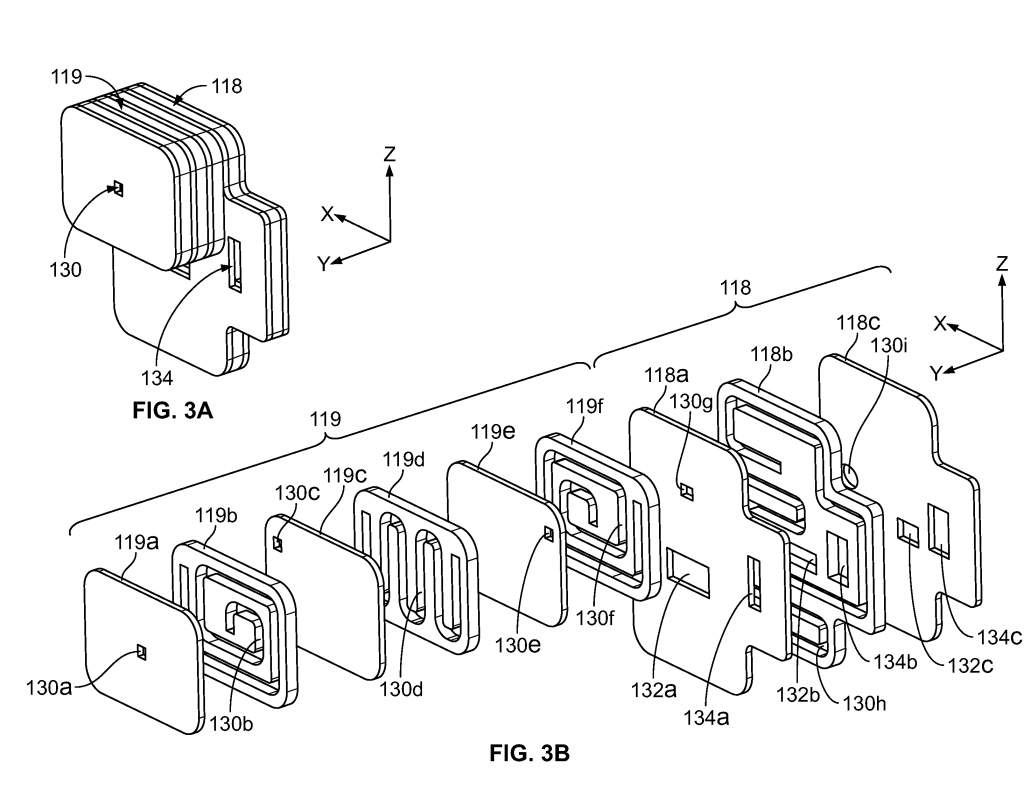
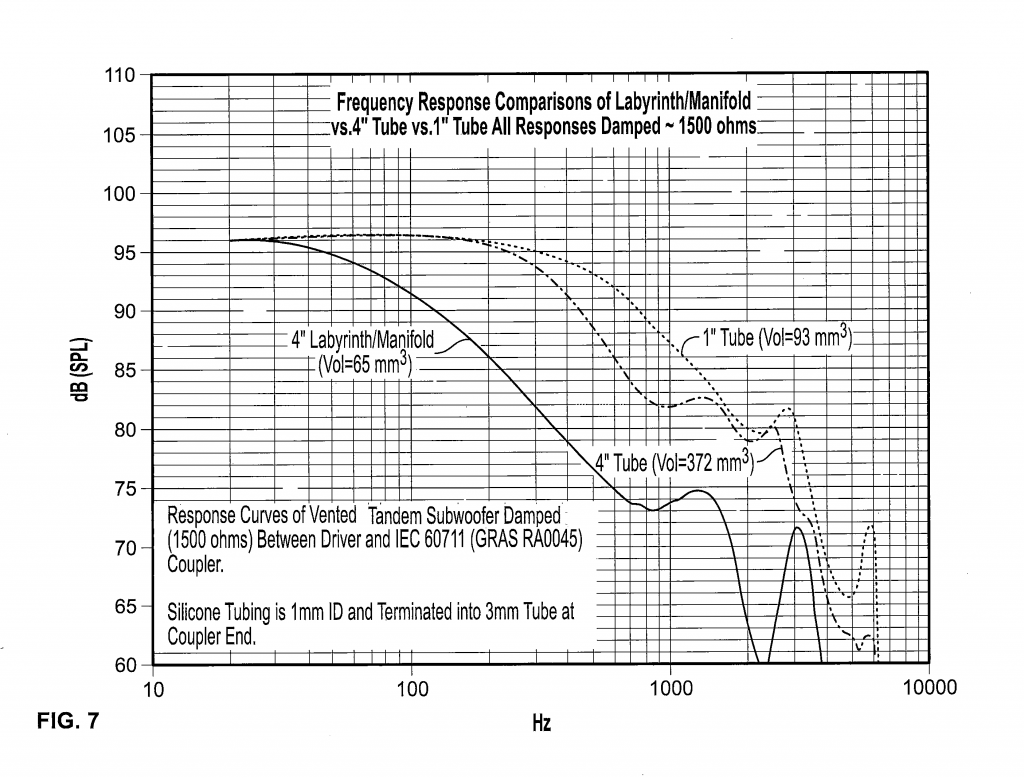




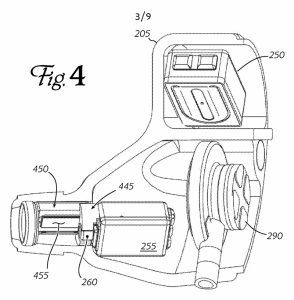
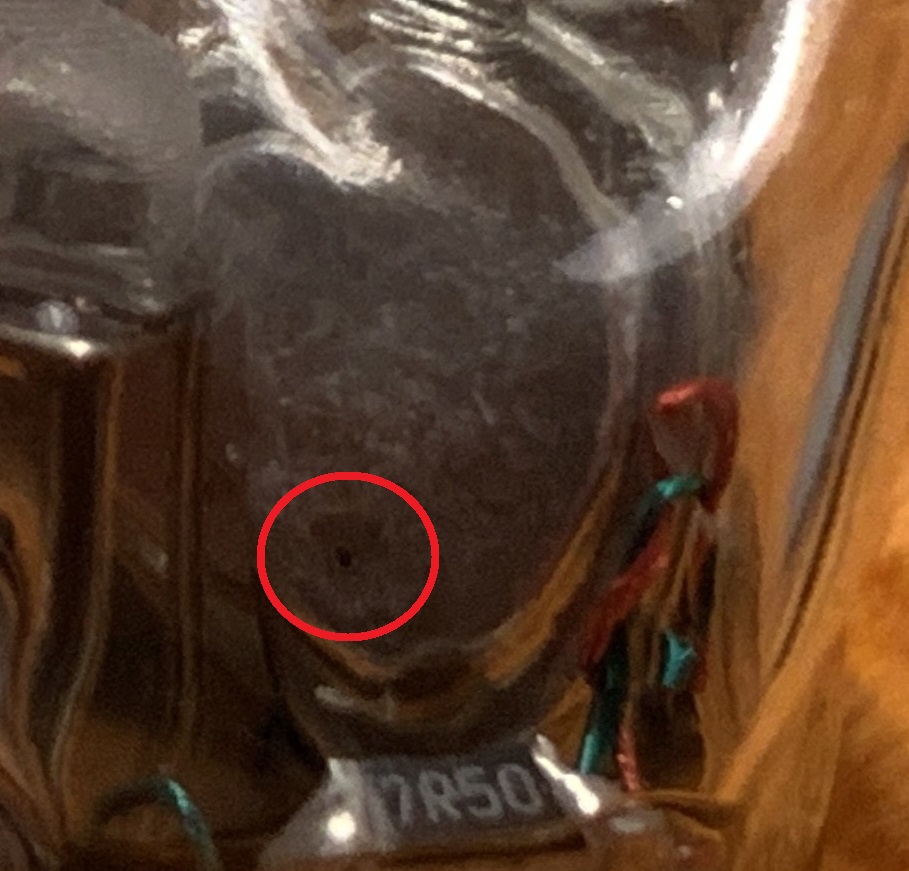



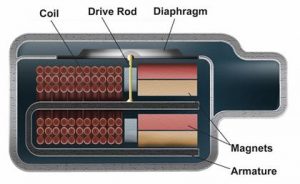




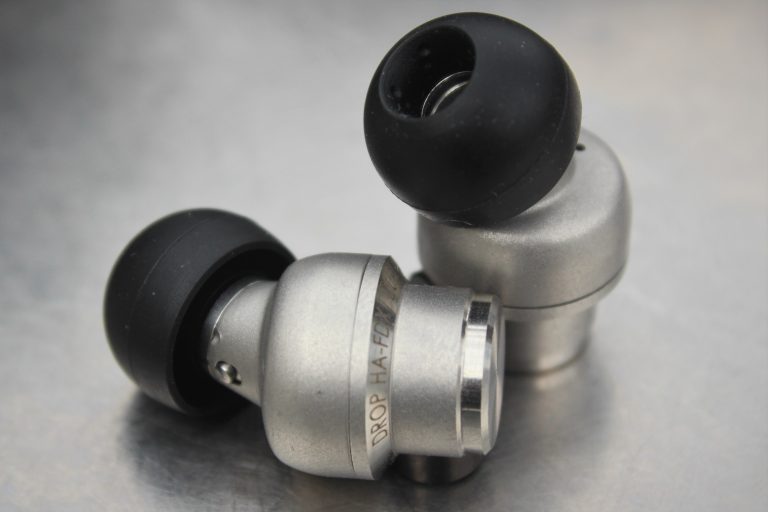

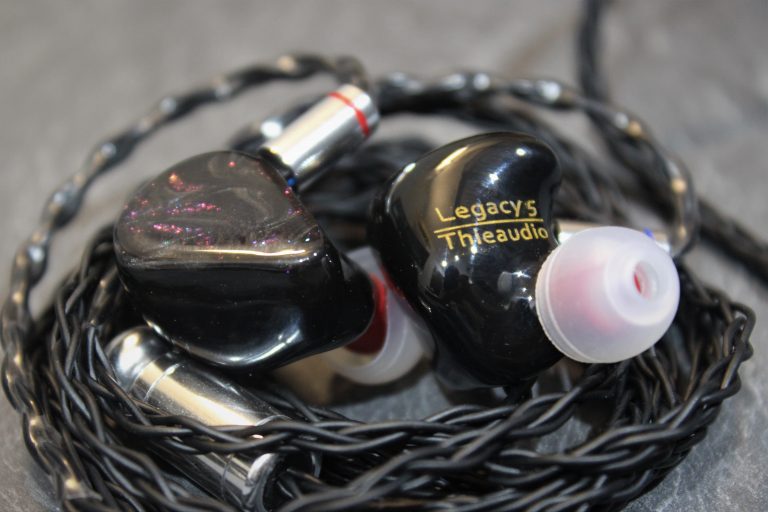





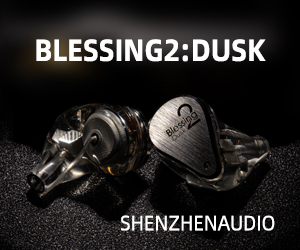
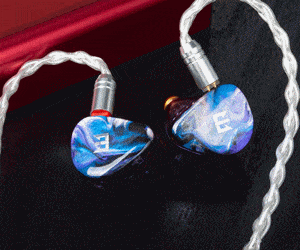

10 thoughts on “64 Audio N8: Technical Breakdown”
Dayum, you put some serious work into this, nice.
Quite impressive set (test standard version of it and like it a lot), but this article is more impressive!
Beautiful review! Thank you as always for the detail and research!
Very impressive! Thank you for the review!
Great review!
So much research behind it.
I’m currently in the process of buying new CIEM’s for performance, I’m a singer and I’m deciding between the 64audio A6t and the UE18+pro 3rd gen.
They both the same amount of drivers, but which one do you think is better??
Thanks!
I prefer the A6t but it’ll be better if you try them out yourself.
Great review!!
I’m about to order it!
What face plates are those? Translucid black or smoke?
Thanks!!
Hey Luis Andre,
Looks like Translucent black, not the opaque black faceplates. Did you get the CIEMs the N8s? How was the sound stock? Did you try the mod?
Hey Crinacle,
Currently deciding on N8 Custom or A12T Customs. I saw the video where you fixed the N8 and now that the Nio is out as well wish they would do a custom on that. But, anyway between the Custom N8 or A12T which one is better in your opinion for a bass head who wants to vibe but not have overwhelming bass? I still need to demo the universal IEM version of the N8 but I will definitely heed your warning about universal iems being a poor indicator in this case of the sound coming out of the custom iems?